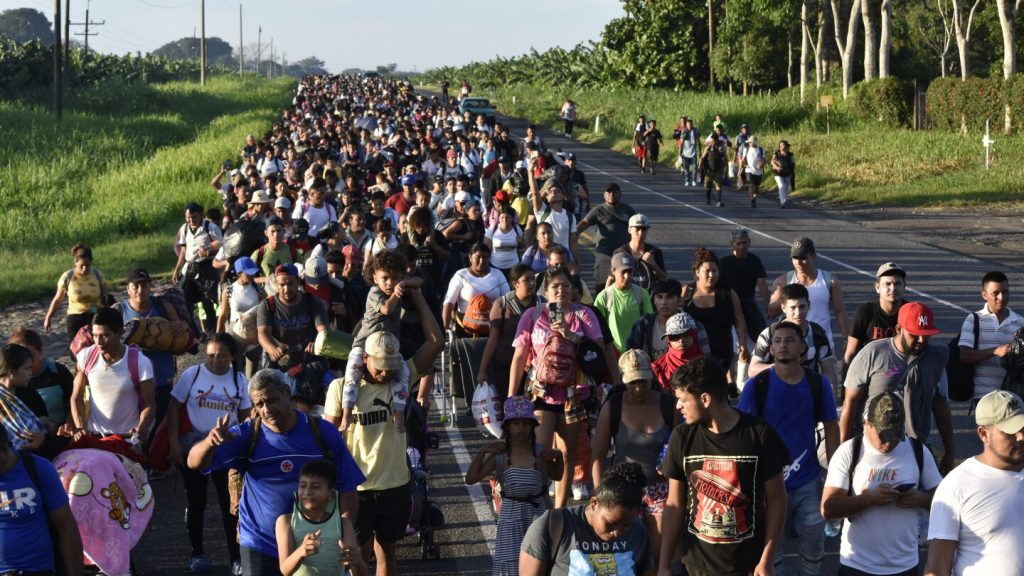Mexican authorities have expanded the access to the U.S. government’s CBP One app for asylum appointments to the southernmost states bordering Guatemala to alleviate the pressure on migrants to continue north. By allowing migrants to apply for appointments in the south, Mexico hopes to reduce the risks of being captured by authorities without papers or preyed upon by organized crime groups as they travel north. The app has been a significant measure in the U.S. efforts to manage the increasing demand for U.S. asylum along its southwestern border, with over 765,000 people scheduling appointments since its launch in January 2023.
While some migrants, like Honduran Germin Alemán, plan to register and wait for appointments in Tapachula, others still feel the need to keep moving north to find work and pay off debts. The Biden administration’s temporary suspension of the asylum process for those crossing illegally in June made the app one of the only ways to request asylum, with the U.S. handling 1,500 appointments daily. The number of migrants crossing the U.S. border illegally has decreased significantly since its peak in December 2023, attributed partially to Mexico’s enforcement efforts, which include intercepting migrants in the north and sending them south again.
Despite welcoming the expansion of CBP One, many non-governmental groups advocating for migrants and human rights have criticized the app as a violation of international law for limiting access to U.S. territory for those in need of protection. These groups claim that migrants often end up stranded in Mexico for months in unsafe conditions, vulnerable to kidnapping, sexual assault, and extortion by criminals and authorities as they wait for their appointments. While Mexico’s National Immigration Institute allows migrants with CBP One appointments to travel freely to the U.S. border, allegations suggest that authorities sometimes detain individuals and send them south to prevent them from reaching the border.
The southern border region of Mexico, historically targeting smugglers and criminals, has become a focal point of territorial clashes between powerful drug cartels. This has resulted in heightened violence and insecurity for migrants and local residents alike. Given these challenges, migrants in Ciudad Hidalgo grapple with the decision of whether to wait in southern Mexico or continue north in pursuit of work opportunities and financial stability. For many, the choice hinges on the availability of jobs and the financial resources needed to sustain themselves during the potentially lengthy wait for an asylum appointment.
The United Nations Refugee Agency has expressed caution about the expansion of CBP One, acknowledging its potential to reduce risks for migrants heading north but emphasizing the need for a comprehensive approach to migration that addresses root causes, transit country protections, and options for asylum in destination countries. Despite the uncertainties and risks, migrants like Noemí Ramírez from El Salvador are determined to begin their asylum applications from Mexico’s Chiapas state, prioritizing the safety of themselves and their families. As they navigate the complex and often dangerous journey, migrants continue to face challenges, uncertainties, and risks as they seek asylum and protection.


